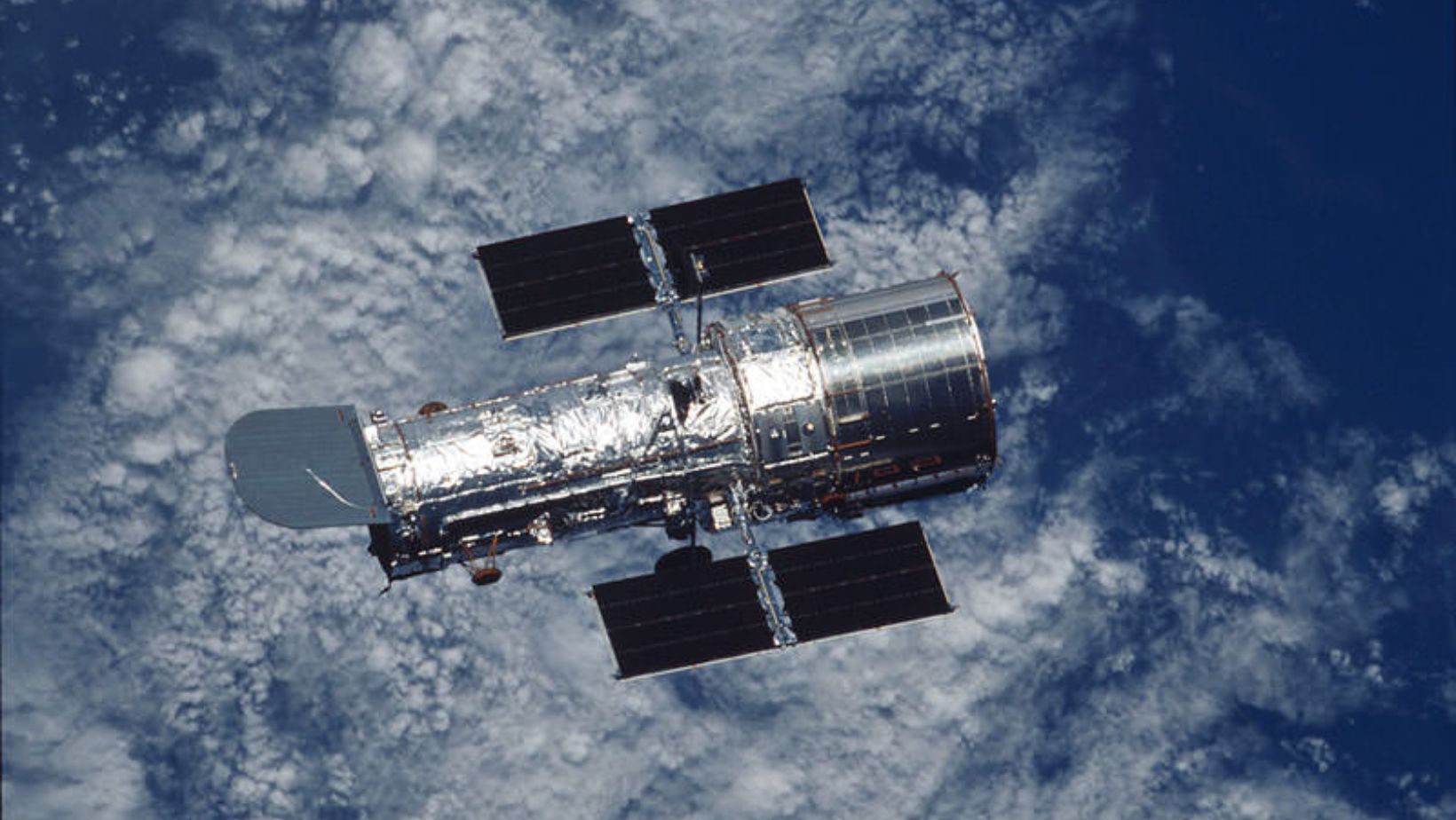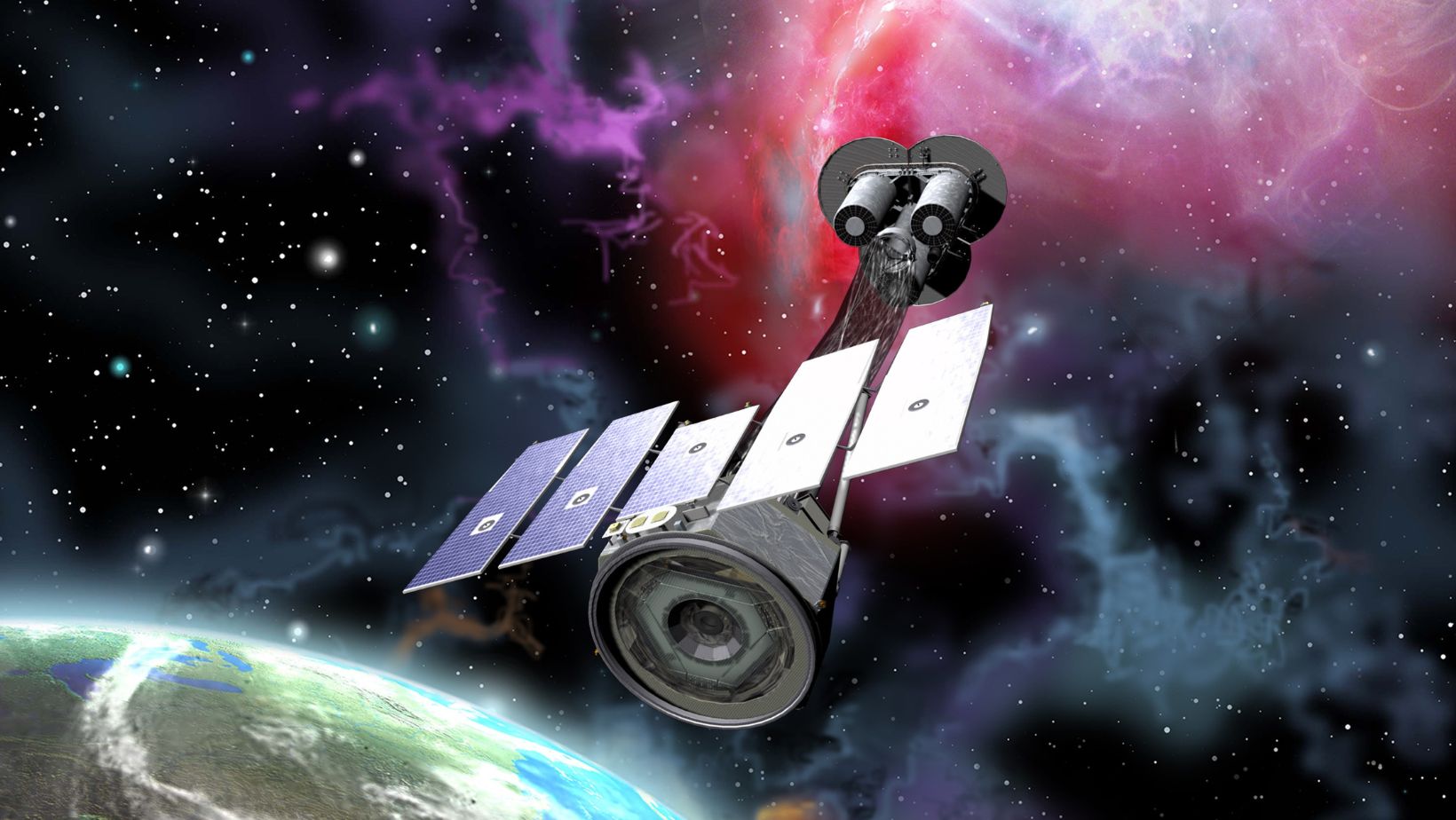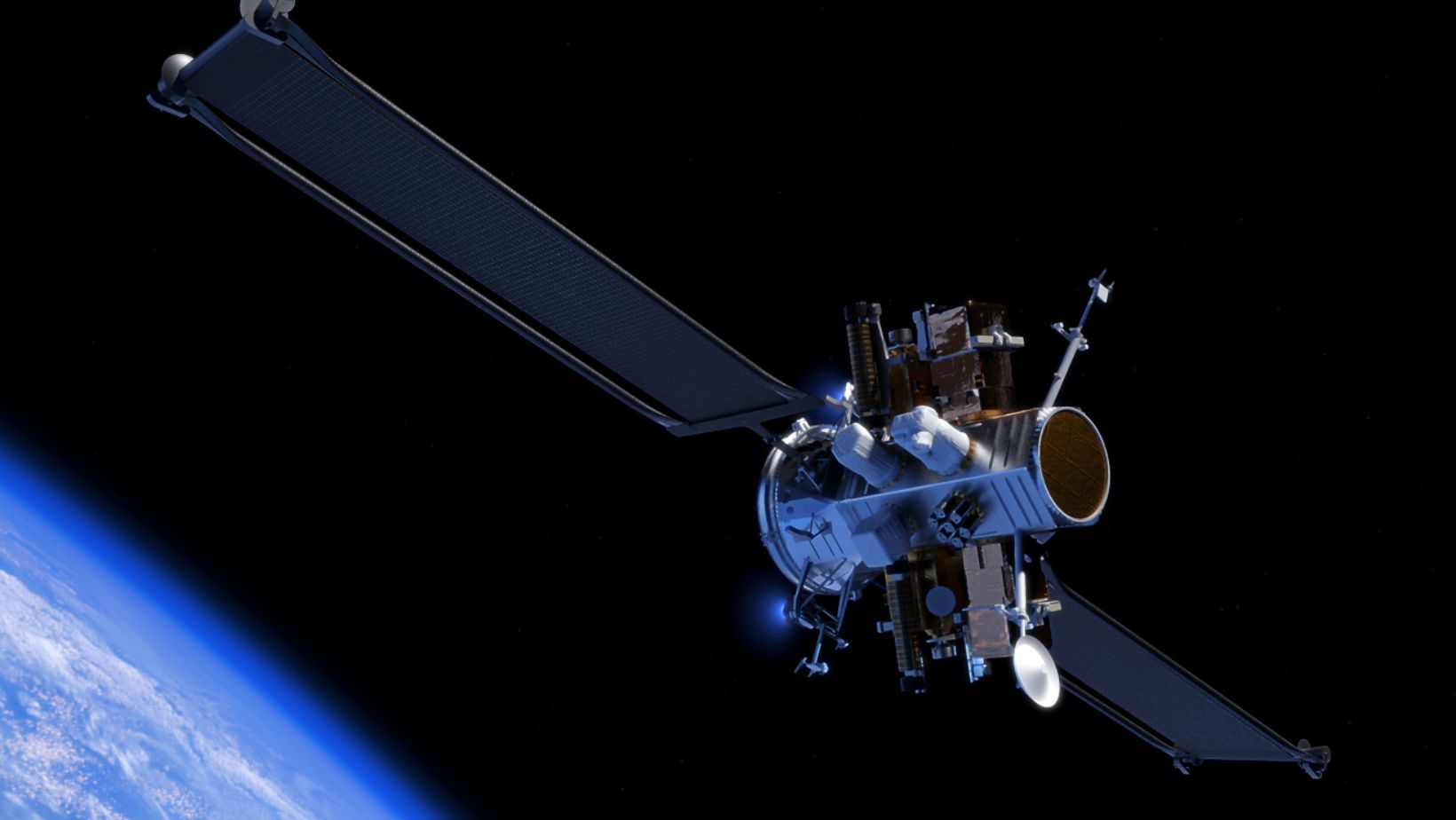Picture this: you’re gazing up at a star-speckled sky, but instead of squinting through the murk of Earth’s blanket, you’ve got VIP access to the universe’s grand show. That’s one of the significant advantages of space telescopes; they’re like front-row tickets to an interstellar spectacle.
We sent these marvels far above our heads for a reason—they give us crystal-clear snapshots from places we can only dream about, one of the advantages of space telescopes. Think Hubble, Spitzer, and soon enough, James Webb. They’re not just fancy hardware but our eyes in orbit peeling back layers of cosmic mystery.
Catch your breath because by sticking around here, you’ll snag insider info on how these sky-high watchers have redefined our grasp on galaxies billions of years old—no time machine needed!
Table Of Contents:
- The Dawn of Space-Based Telescopes
- The James Webb Space Telescope Era Approaches
- Infrared Astronomy’s Eye in the Sky
- The X-Ray Visionaries of Space Exploration
- The James Webb Space Telescope Era Approaches
- The James Webb Space Telescope Era Approaches
- Advantages of Orbiting Astronomical Platforms
- FAQs in Relation to Advantages of Space Telescopes
- Conclusion: Advantages of Space Telescopes
The Dawn of Space-Based Telescopes
When we talk about space telescopes, it’s like discussing the superheroes of astronomy. These fantastic tools have allowed us to break away from our terrestrial boundaries and witness some of the most incredible spectacles the cosmos offers. Before these orbiting eyes on the sky, astronomers had to deal with Earth’s atmosphere muddying up their view.
Hubble Space Telescope: A Quantum Leap in Astronomy
Over 25 years ago, the Hubble Space Telescope was launched into Earth’s orbit, and boy, did that change everything. Suddenly, we could see further and clearer than ever—like getting glasses after years of squinting at the fine print. The images this iconic space telescope sent back were not just prettier pictures; they opened new chapters in our cosmic storybook.
We’re talking galaxies colliding billions of years ago and stars being born in nebulous cradles – stuff that makes you feel both tiny and fortunate to be part of such a fantastic universe. Plus, remember those times when you thought Pluto was still a planet? Thank Hubble for clearing that up, too.
Overcoming Earth’s Atmospheric Challenges
Do you know how heat ripples make roads look wet from afar on some days? That same kind of distortion happens when starlight passes through Earth’s atmosphere—it warps our view like carnival mirrors at a funhouse. This is why placing telescopes above all that atmospheric noise is vital if we want clear shots rather than blurry snaps.
To get past these hiccups caused by weather conditions or light pollution—which are real party poopers for ground-based telescopes—astronomers send their gear into space where there’s nothing but a vacuum between them and distant objects twinkling away serenely.
The James Webb Space Telescope Era Approaches
NASA plans to launch the James Webb Space Telescope soon, promising next-level peeks at what lies there. Imagine trading your old tube TV for the latest ultra-HD screen—that leap forward feels puny compared with what James Webb will do compared with its predecessors like Hubble and Spitzer.
Next-Generation Observations with James Webb
This isn’t just another piece added to our celestial puzzle; it represents an entirely different way to play the game. With instruments sensitive enough to catch whispers from the cosmos, we’re unlocking secrets that have been silent for eons. We’ve gained a superpower, allowing us to hear the subtle notes of the universe’s grand symphony.
Key Takeaway: Advantages of Space Telescopes
What are the advantages of space telescopes? Space telescopes are our cosmic VIP passes, letting us cut through Earth’s blurry atmosphere for a clear view of the universe’s wonders.
Hubble turned fuzzy stars into high-def galaxies, and now James Webb is set to amp up that clarity to epic proportions.
Infrared Astronomy’s Eye in the Sky
When examining the universe, infrared astronomy may not be the initial thought that springs to mind. But here’s a fun fact: our universe is brimming with cool stuff that we can’t see with regular telescopes. That’s where infrared telescopes like the Spitzer Space Telescope come into play, giving us an exclusive backstage pass to showtime in space.
Spitzer’s Legacy and Contributions to Infrared Astronomy
The Spitzer Space Telescope, affectionately known as Spitzer, has been up there since 2003—a solid 15-year gig of unraveling cosmic mysteries before its mission ended. This infrared astronomical satellite, part of NASA’s great observatories program, took on heavyweight challenges that ground-based scopes couldn’t handle.
We’re talking way beyond snapping pretty pictures; it delved deep into areas invisible to optical telescopes. Picture this: celestial objects shrouded by dust suddenly revealing their secrets under Spitzer’s gaze—the equivalent of having night-vision goggles at a dark sky party.
Better yet? It could peek at colder objects too faint for visible light telescopes to detect—think distant planets and embryonic stars cooking up inside nebulous nurseries—which would otherwise stay hidden from our curious eyes.
The tech behind this? The telescope was cooled using an ingenious method involving liquid helium—an approach quite chill enough to allow super-sensitive detectors within its infrared space observatory hardware to pick up heat signatures from billions of years ago. Now tell me, isn’t it cooler than being in the front row at your favorite band’s concert when concerts were still a thing?
An Unclouded View Above Earthly Limitations
You’ve got weather conditions throwing tantrums and light pollution acting like photobombs ruining what could have been clear shots taken by Earth-based telescopes—all thanks to Earth’s atmosphere distortion antics. Meanwhile, orbiting high above these terrestrial troubles sits Spitzer—not bothered by atmospheric distortion or pesky clouds blocking its view—it had one job: capturing pristine images without Earth getting all dramatic about it.
This meant researchers received the data they wanted—unadulterated cosmic truths instead of cloudy half-truths (pun intended). Just imagine trying to watch TV with someone constantly flickering lights or walking past—it gets old real quick. You wouldn’t find many astronomers complaining about the new clarity. They were too busy gazing at the stars, grateful for an unobstructed view that let them unravel the universe’s mysteries individually.
Key Takeaway: Advantages of Space Telescopes
What are the advantages of space telescopes? Space telescopes like Spitzer let us see the unseen—revealing cosmic secrets from objects hidden by dust and giving us clear, unobstructed views above Earth’s atmosphere.
Infrared astronomy gets a boost with tech that sees cold, distant stars and planets far beyond what we can catch with regular scopes on the ground.
The X-Ray Visionaries of Space Exploration
Gazing up at the night sky, one can only imagine what lies beyond our atmosphere—the hidden universe of X-ray light. A handful of stars, maybe a planet or two. But beyond our atmosphere lies an invisible universe teeming with high-energy action—X-ray light is completely hidden from view. Enter the space-based fleet of observatories like Chandra and NuSTAR: these are not your grandpa’s telescopes.
Chandra X-Ray Observatory’s High-Energy Discoveries
Astronomy buffs know it well—the Chandra X-ray Observatory, NASA’s flagship for X-ray astronomy, has revealed the secrets of hot and energetic objects in space since 1999. It lets us peek into phenomena like exploding stars and clusters brimming with galaxies.
You could say Chandra has x-ray vision better than any superhero comic could dream up. This powerful telescope orbits far above the Earth’s surface, where it can snap crisp images without pesky air getting in the way—a real game-changer after decades when ground-based scopes were all we had to rely on.
If we’re talking stats—and who isn’t?—imagine this: thanks to its super-sensitive instruments, Chandra detects more than a billion years old photons. That means looking back through time itself, talking about a history lesson.
NuSTAR and XMM-Newton’s Contribution to X-Ray Astronomy
Moving on to another set of celestial detectives—the Nuclear Spectroscopic Telescope Array (NuSTAR) specializes in hard X-rays. At the same time, its partner-in-crime-solving across the cosmos is none other than ESA’s XMM-Newton. These two make quite a dynamic duo.
NuSTAR is akin to putting on special glasses that let only particular rays through—you get details sharper than cactus spines. Its observations home in on black holes and supernova remnants so ancient they might as well be cosmic fossils.
XMM-Newton plays its part by covering a broader range. Still, together, their combined forces bring out details no telescope could manage alone—they complement each other ideally like peanut butter and jelly or… gamma rays and hard X-rays.
The James Webb Space Telescope Era Approaches
All eyes are now turning toward something even bigger looming over our horizon: The James Webb Space Telescope. This groundbreaking project promises to peel back the layers of space and time, giving us a glimpse into the universe’s earliest moments.
Key Takeaway: Advantages of Space Telescopes
What are the advantages of space telescopes? Space telescopes like Chandra and NuSTAR are cosmic super-sleuths, giving us the x-ray vision to see hidden high-energy wonders in space that ground scopes can’t touch.
With tech so sensitive it peeks back billions of years, these observatories team up to reveal a universe beyond our night sky’s twinkle.
The James Webb Space Telescope Era Approaches
Imagine a time machine capable of peering back over 13 billion years. Well, guess what? The JWST is almost like a time machine, allowing us to look back over 13 billion years. As NASA gears up for its most ambitious launch in the next decade, let’s discuss how this mammoth space observatory will change our cosmic game.
Next-Generation Observations with James Webb
Remember when Hubble gave us those jaw-dropping images of distant galaxies? Now, think bigger and bolder. That’s JWST for you – it’s like showing Hubble a super-powered sibling. This new Webb space telescope, armed with cutting-edge tech, is set to zoom past current limitations and capture details of the universe far beyond what even Spitzer could dream of.
This isn’t just another telescope; it’s an engineering marvel slated to become the premier discovery machine for astronomy. With mirrors that can fold origami-style into a rocket, once unfurled in space, they’ll offer unprecedented clarity by operating primarily in infrared light—think night vision goggles but on steroids and floating through deep space.
JWST’s sensitivity allows us to study every phase in cosmic history—from within our solar system across vast stretches leading back to the Big Bang. Its powerful instruments are primed to unveil secrets from black holes munching away at stars, baby planetary systems forming around young suns, and maybe even find signs of life hiding somewhere among countless exoplanets.
Cool Features You’ve Got To Know About
We’re not talking about your standard backyard optical telescopes here; JWST packs some serious science punch. Picture this: an infrared spectrum so sharp that astronomers will map atmospheric components of alien worlds hundreds or thousands of light-years away—that’s right; we’re potentially sniffing out alien atmospheres without leaving home.
The kicker? All these observations happen without Earth’s atmosphere getting in the way since JWST orbits around L2—the second Lagrange point—a sweet spot where gravitational forces create a stable environment perfect for stargazing sans distortions caused by pesky air molecules down here on terra firma.
Astronomy Like Never Before: Advantages of Space Telescopes
If all goes according to plan—which, after numerous delays, feels like watching paint dry—we’re finally launching this lousy boy soon atop an Ariane 5 rocket from French Guiana straight into outer space luxury accommodations (I’m looking at you, Lagrange Point). And get ready because this stellar venture is set to dazzle once operational—it takes six months post-launch till showtime. So please mark your calendars and keep your eyes peeled on the skies; we’re about to make history.
Key Takeaway: Advantages of Space Telescopes
What are the advantages of space telescopes? Think of the James Webb Space Telescope as Hubble’s supercharged sibling, ready to capture cosmic scenes with clarity that’ll knock your socks off. It’s an infrared powerhouse peering back in time, set to uncover universe secrets from black holes to potential alien life.
JWST is no ordinary scope; it packs a punch with tech that could sniff out alien atmospheres from light-years away. And all this without Earth’s atmosphere blurring the view. Get set for astronomical discoveries like never before.
Advantages of Orbiting Astronomical Platforms
Astronomy buffs, get this: orbiting astronomical platforms are like VIP lounges in the night sky. They’re high above the hustle and bustle of Earth’s atmosphere, giving scientists a front-row seat to the universe’s most exclusive show. Let’s talk about why these cosmic observatories rock our world.
Hubble Space Telescope: A Quantum Leap in Astronomy
Imagine swapping out your scratched-up glasses for a brand-new pair with perfect clarity—that’s what Hubble did for us back when it hitched a ride on Shuttle Discovery over three decades ago. This space telescope gave us postcards from distant objects billions of years old, making history as it soared into Earth’s orbit. The game-changer? It could snap high-resolution photos without Earth’s atmospheric challenges, photobombing every shot.
This old-timer has shown some serious staying power, too—over 25 years later and still going strong. But here comes the kicker: while you’re enjoying that more apparent view courtesy of the Hubble Space Telescope, remember that its successor is waiting in the wings to zoom even further into deep space wonders.
Overcoming Earth’s Atmospheric Challenges
We love our planet, but let’s face it—the atmosphere can be quite the party pooper when trying to gaze at stars. Twinkling might look pretty from down here, but up there, telescopes need stability because they’re not just looking at visible light; we’ve got an entire electromagnetic spectrum to explore.
Taking telescopes off terra firma lets them dodge atmospheric distortion, which scrambles signals faster than my aunt mixing her famous salad dressing. And if you think gamma rays or ultraviolet light are getting through those pesky clouds—you’d have better luck finding socks that match after laundry day. So astronomers put their toys where weather conditions don’t mess with playtime—in earth orbit or cool spots like Lagrange points where gravity plays nice and keeps things stable.
Infrared Astronomy’s Eye in the Sky
You wouldn’t use sunglasses at night unless you were trying to channel your inner Corey Hart—but infrared telescopes study stuff beyond human sight by peering through dust clouds swaddling baby stars or planets-in-the-making. Enter Spitzer Space Telescope—it took infrared astronomy to the next level by chilling out (literally) far away from home base for over 15 rocking years before saying “mic drop.”
The secret sauce? Its cooled infrared detectors worked like a charm, providing precise measurements essential to the mission’s success.
Key Takeaway: Advantages of Space Telescopes
What are the advantages of space telescopes? Space telescopes give us a VIP ticket to the universe’s wonders, far from Earth’s blurry atmosphere. Hubble’s sharp pics changed our cosmic view, while its successor promises even deeper space dives.
Dodging atmospheric distortion lets space scopes capture everything from gamma rays to infrared without interference—like clear signals through cloudy skies.
Infrared telescopes like Spitzer cut through cosmic dust precisely, revealing starry nurseries and new planets in their celestial cradle.
FAQs in Relation to Advantages of Space Telescopes
What are the advantages and disadvantages of ground-based telescopes?
Ground scopes can be immense and easily upgraded but grapple with atmospheric blur and light pollution.
What is one advantage of a space-based telescope? What is one benefit of a ground-based telescope?
A space scope dodges Earth’s atmosphere for crisper images; ground ones cost less to build and maintain.
What are the advantages of the James Webb Space Telescope?
The James Webb will see further into space-time with its more enormous mirror and superior infrared tech than Hubble ever could.
How can telescopes help us see things in space?
Telescopes gather faint light from far off, letting us spot galaxies, stars, and planets beyond naked-eye reach.
Conclusion: Advantages of Space Telescopes
So you’ve journeyed through the cosmos with us, from Hubble’s historical snapshots to Spitzer’s infrared insights. We’ve explored how space telescopes cut through cosmic clutter for a front-row view of deep space drama.
You now know why these high-flying observatories are game-changers. They bypass Earth’s blurry atmosphere and open up wavelengths blocked by our skies. This means sharper images and more data points to unravel astronomical mysteries.
The advantages of space telescopes are clear: they capture scenes billions of years in the making, offering clues about our universe that would otherwise remain hidden. Aside from the mentioned telescopes, we also have X-ray observatories, radio telescopes, and space shuttles that provide clearer views and high resolution images and information.
And remember James Webb? It stands poised on the cusp of discovery, ready to take over as the guardian of galactic secrets—with even greater precision and depth than its predecessors ever could have imagined.
So, what are the advantages of space telescopes? Now you know!

